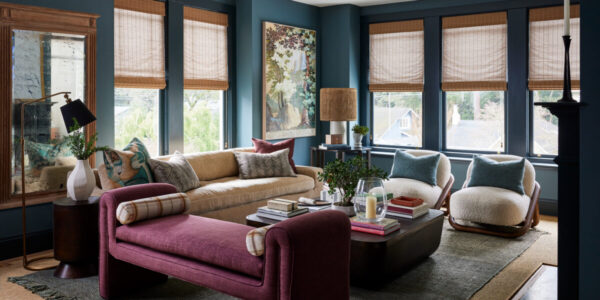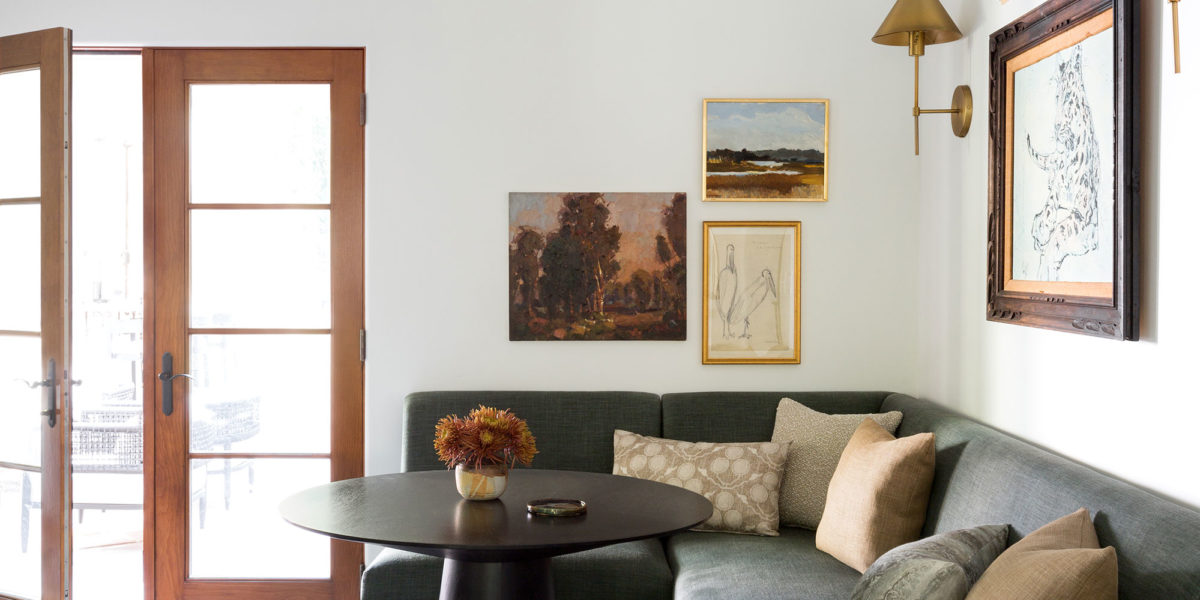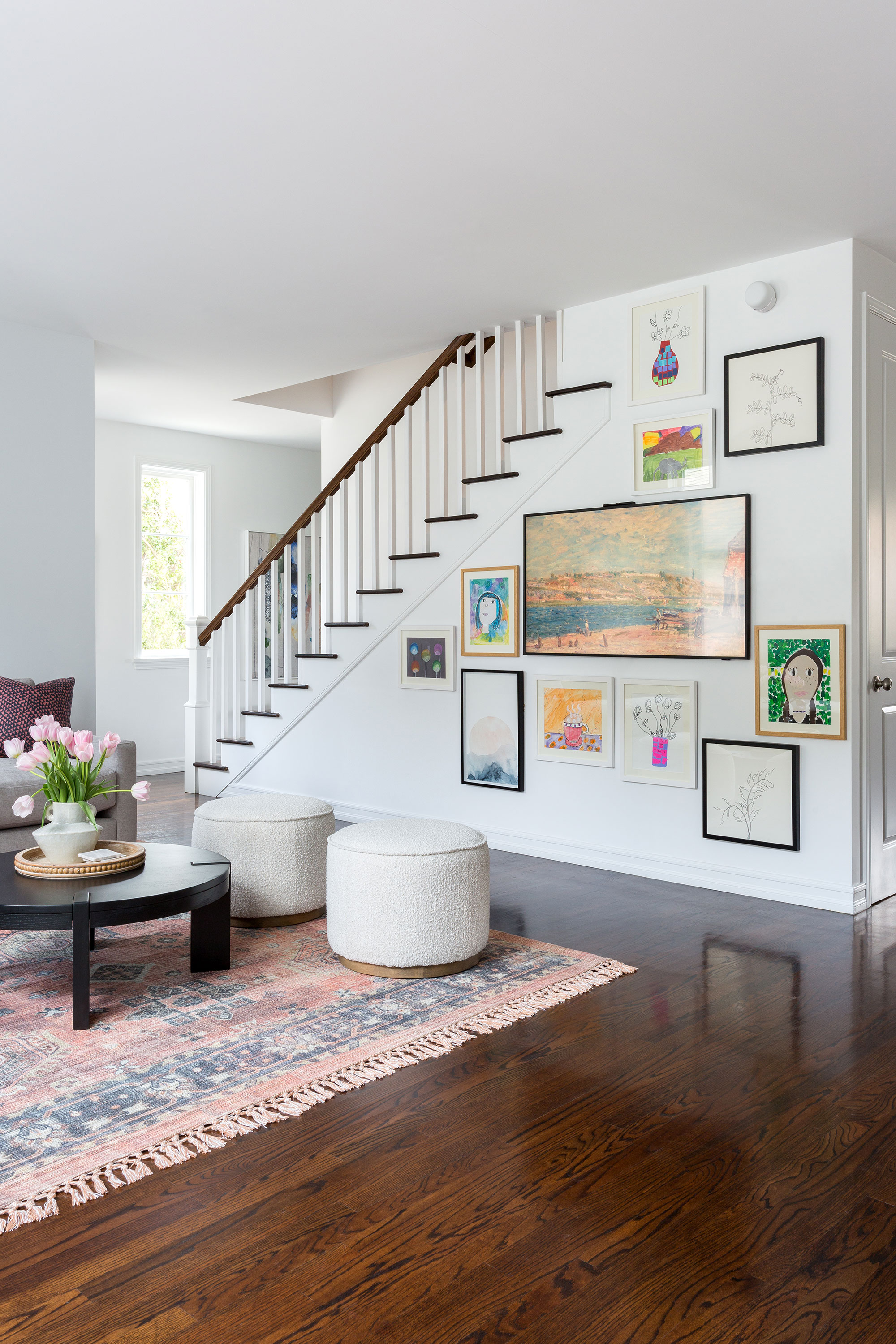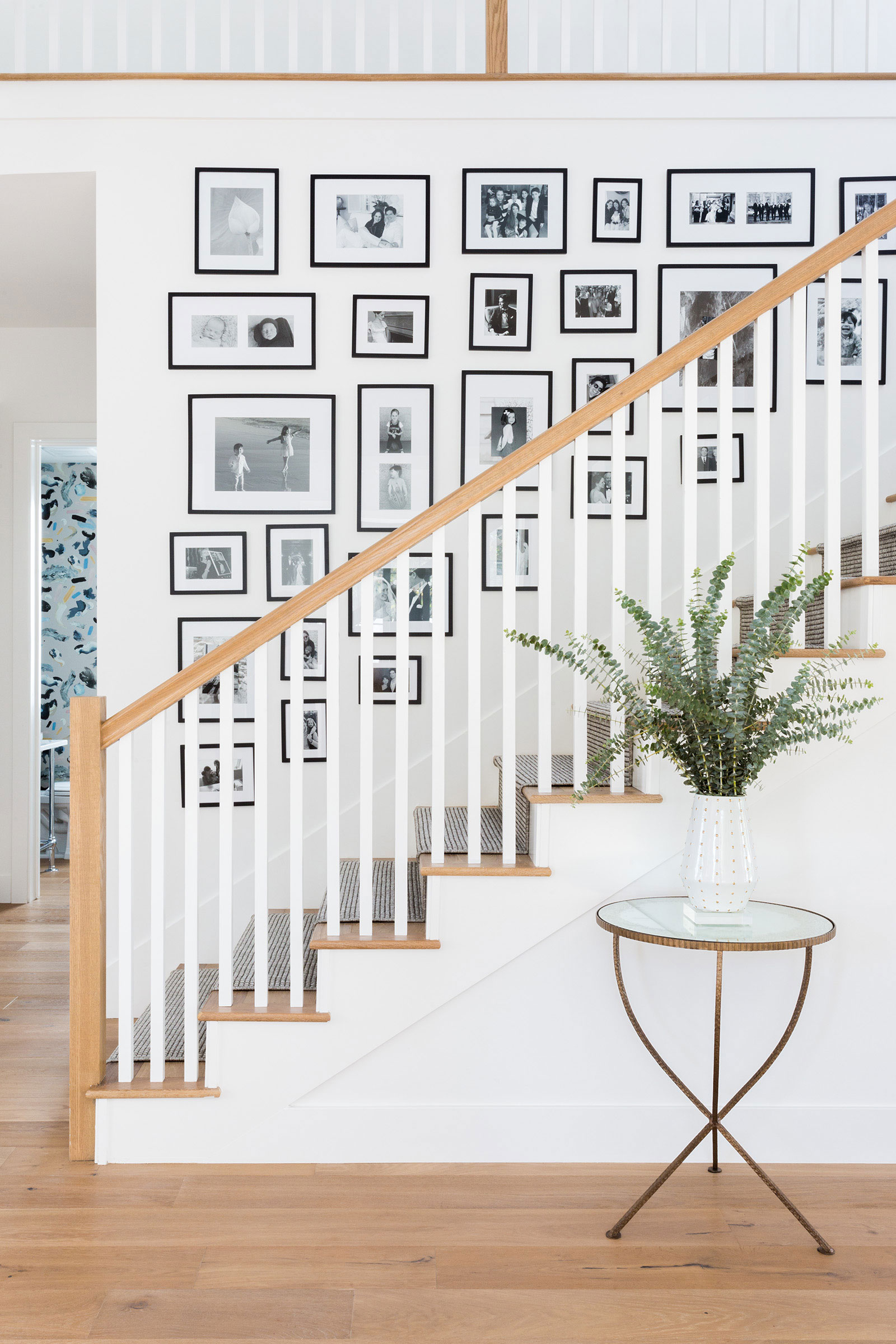
8 Mistakes You’re Probably Making When Hanging a Gallery Wall
An interior designer shares what to do instead.

Amy Bartlam
I like to think of artwork as the “jewelry” of your home. It has the power to pull everything together and add some color (sometimes literally) and interest to a space. The idea of hanging artwork may sound like a pretty simple and easy thing to do, right? You find a piece of art you like and then just nail it on the wall. And it can be as simple as that, but there’s some room for failure, too. The art might not mesh with your space or feel “forced,” it could feel cluttered, and the paintings might be at the wrong height… there’s a lot that can be deemed as a “don’t.” And when you add a gallery wall into the mix, it can get even more complicated because there’s a lot of planning you’ll want to do before you hang it all up. For starters, you need to think of the configuration and which pieces of art go well together.
So how can you make sure you’re not making any artwork hanging mistakes and leaving your walls ridden with holes from nails? Los Angeles-based interior designer, Jenn Feldman, founder of Jenn Feldman Designs, shares some insight with us. First, when it comes to choosing art, it’s all about mix and curation. Feldman says that as long as you love the pieces in your home it should feel connected to your style. “Art should never be forced! Curating different mediums adds textures and a feeling of a collection,” she explains. “Try to find like-minded artists, not multiple pieces from the same artist. This keeps interest and makes all pieces feel special.”
And as for if there is such thing as too much art, Feldman says there is no limit, but you have to be aware of the balance. “It’s helpful to think of your walls like a great poker hand,” she adds. “If you’ve created a large gallery wall as a focal point then you’ve probably cashed in that hand so don’t repeat it! The relationship of space and breathing room are the key to any quantity of books, art, or objects in a room or overall home. It’s all about balance.”
Read on for some common mistakes to avoid when creating a gallery wall—and some of these tips work for hanging art in general.

Amy Bartlam
1. Not Having Patience
Feldman says when hanging a gallery wall, the first ingredient you need is patience. “A large open floor space is a great way to start mapping out the wall,” she explains. “Start laying frames out on the floor in groupings of three, adding left and right to keep the weight ‘centered’ and even. Think of this like a large puzzle—you have to try a few combinations to get it right. And snap photos before you change it up so you can easily go back and see all options.”
2. Choosing Art That’s the Wrong Size
Size does matter here. Feldman says a 4-inch x 6-inch frame is great on a bookcase shelf, but not exactly on a wall.
3. Forgetting to Choose a Theme or Common Thread
This is especially important with a gallery wall. “Find something you can thread into all the pieces—keep all the frames cohesive with a singular color, keep all the items framed with the same mat color—something to connect all the dots,” Feldman suggests. “If you don’t have a rhythm the wall will look spotty and random.”
4. Hanging Art Too Far Apart
On a gallery wall, you’ll want to keep it tight. Feldman recommends squaring the space. “Find your box of space on the wall and keep things tight,” she explains.
5. Grouping in Even Numbers
“The eye connects visually in sets of threes,” Feldman says. “Unless the goal is a straight square grid, even numbers read forced and too uniform. Try to build out in sets of three!”

Amy Bartlam
6. Hanging Art at the Wrong Height
“Find your center line—start in the center, eye level around 64 inches to 68 inches from the floor,” she recommends. “Grouping too high loses the intimacy; you want your eye to gravitate right at the center area!”
7. Placing Art in Tricky Areas of the Home
You’ll want to give careful consideration to certain areas of the home, like a staircase. That doesn’t mean you can’t hang art there, but you’ll have to be mindful of scale and proportion. “Start with an upstairs second floor hallway for a family photo gallery wall, and on the first level a hallway off the powder room or side space is a great way to start small,” Feldman says.
8. Not Investing in Quality Framing
“Framing art is definitely an investment—smaller pieces are much easier to frame on your own with pre-made frames from an art or craft store,” Feldman explains. “But good pieces of art, especially original art on paper, are worth spending on quality framing. It not only enhances the beauty and finishing of the piece but adds insurance that pieces are protected from sun damage or moisture.”
Read the Current Issue Here!
Get one year of Sunset—and all kinds of bonuses—for just $29.95. Subscribe now!
